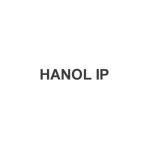Since the Supreme Court dropped the ‘registration defense’ for later-registered marks by an en banc ruling in early 2021, even the use of registered marks can infringe an earlier-registered mark in Korea. Accordingly, it is worth looking at what would be a proper use of a trademark in Korea under various circumstances.
Trademark use
From a third-person point of view, it would be the matter of what types of trademark use do or do not infringe another party’s trademark rights. From the owner’s point of view, it would be the matter of how to use the trademark in order to maintain the registration and to enforce it.
For third parties, it is generally regarded as ‘fair use’ when they use another party’s trademark only to refer to the genuine goods in a truthful manner; or simply to explain or describe the quality, quantity, raw materials, efficacy, shape, function, or method of use of such goods. In this regard, there is an explicit provision in the Korean Trademark Act that limits the scope of registered marks (Article 90 of the KTA), which is similar to the fair use exception of other jurisdictions.
As for fair use, Korean courts ruled that (i) an indication of ‘HMC’, a trademark owned by Hyundai Motor Company for automobiles and parts thereof, on the packaging of the car air cleaner to show the applicable vehicle of the cleaner; and (ii) an indication of ‘EBS’, a trademark and well-known trade name of the Educational Broadcasting System, on teaching materials for broadcasting lectures, were deemed to be fair use (Supreme Court decisions 2001Do1355, 2010Do5994). However, when the use of a mark implies any sponsorship or endorsement by or affiliation with the trademark owner, such use would not be considered fair use.
For trademark owners, ‘use’ of a trademark is not a prerequisite for filing an application for the registration of a trademark in Korea. In addition, ‘proof of use’ is not required for renewal of the mark. With such relatively low hurdles, trademark owners tend to file trademarks for overly broad descriptions to obtain a broader scope of protection. Consequently, many registered trademarks are partly or wholly unused by their registrants in Korea.
Cancellations
However, if a registered mark is not used for three consecutive years, it becomes vulnerable to cancellation. A non-use cancellation trial can be filed by ‘anybody’, not just by an interested party, against some or all of the goods. Not even submission of an investigation report to prove non-use of the mark is required. The challenger may further request ‘suspension of examination’ of his/her own trademark application until the cited earlier registration is cancelled so that the challenger’s application can be registered after the challenged mark is cancelled.
Thereafter, when the trademark is conclusively cancelled, the owner of the cancelled mark cannot file an application for an identical or similar mark in connection with the cancelled goods for three years from the filing date of the cancellation trial.
The registrant can avoid the cancellation of the entirety of the goods if he/she can prove that he/she used his/her own mark for any of the goods challenged. This, in turn, means that third parties need to cleverly choose the goods to challenge as those actually in conflict.
When a cancellation trial is filed, in response, the trademark owner must prove the use of the mark in the form ‘as registered’. ‘As registered’, the Korean courts have recognised the mark in actual use for English-only letters as proper use when the registered mark was made in English and its Korean transliteration for the reason that they were substantially identical (Supreme Court decision 2012Hu2463).
If the evidence submitted in the cancellation action cannot prove the substantial use of the mark in the ordinary course of trade, the registration will be cancelled (Supreme Court decision 2011Hu354). Surprisingly, the success rate in non-use cancellation actions in Korea is quite high; over 80% of the challenged marks were cancelled over the past five years.
Using a re-filing strategy
It is not unusual for brand owners to follow a ‘re-filing strategy’, namely, filing the same trademark in connection with the same goods to reset the non-use ‘vulnerability clock’ in Korea. According to the law, it is not permissible to re-file an identical mark with the same designated goods under Article 38 of the KTA (one application for one trademark). However, in practice, by slightly changing the font, typeface, letter case, or colour of the specimen of the mark, or the descriptions of the designated goods, substantially identical marks can be registered for actually identical goods.
If the marks are successful and well known, the owners may make similar efforts in Korea to prevent them from becoming generic, such as using the ® symbol or ™ symbol, or using capital letters, different typeface, quotation marks, or a stylised format that differs from the surrounding text.
Trademarks are a valuable asset to their owners. To give value to these assets, owners must use them properly. ‘Properly’ may be defined differently according to time, place, and circumstances. At present, while the cancellation of a mark seems to be rather easily achievable in Korea, on the other hand, owners can use the re-filing strategy under the legal framework of proper use.
Min Son, PhD
Managing partner, Hanol IP & Law











